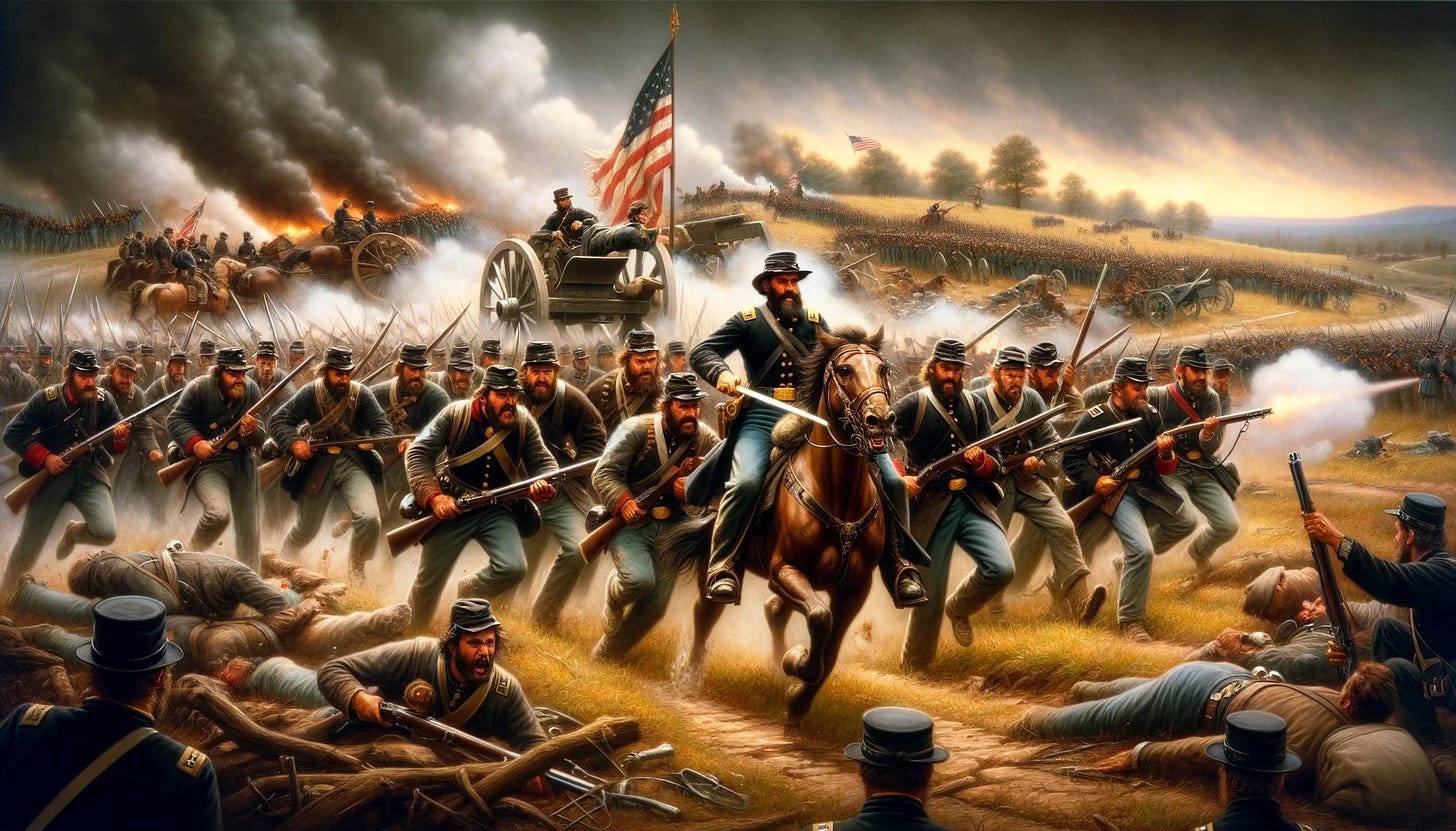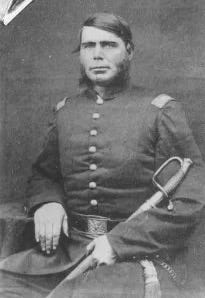“What regiment is this?”
“First Minnesota.”
“Colonel, do you see those colors?”
An almost imperceptible nod.
“Then take them!”
With that brief exchange, spoken in the heat shimmer of a July afternoon, Colonel William Colvill wheeled his horse, raised his sword, and hurled the 1st Minnesota Volunteer Infantry straight at a Confederate brigade four times its size.
In the 262-man rush that followed, 215 fell killed or wounded, an 82 percent casualty rate, the highest of any Union regiment on any single day of the Civil War.
Yet the men did not falter. Lieutenant William Lochren, an Irish immigrant, would later write:
“Every man realized in an instant what that order meant - death or wounds to us all…the sacrifice of the regiment to gain a few minutes’ time and save the position. And every man saw and accepted the necessity for the sacrifice.” Their commander, Major General Winfield Scott Hancock, confessed that giving the order “caused me great pain,” but he never doubted its necessity: “The superb gallantry of those men saved our line from being broken. No soldiers on any field, in this or any other country, ever displayed grander heroism.”
The Anatomy of Heroism
Most of us - leaders and followers alike - will never stare down a Cemetery Ridge. But the ingredients of that moment belong in every classroom, squad room, and boardroom today:
The Three Pillars of Enduring Leadership
Character: the moral bedrock that lets a person recognize what must be done.
Trust: the invisible currency earned long before the crisis, enabling people to follow without hesitation.
Competence: the practiced skill that makes bold action possible rather than reckless.
Colvill’s regiment had drilled since April 1861 under citizen-soldier Colonel Willis Gorman, fought through First and Second Bull Run, and stood in the cornfields of Antietam.
They understood how to fight, but more importantly, they understood why: to preserve the Union.
When Colvill pointed his sword toward the enemy colors, his men needed no further explanation.
From Battle Lines to Bottom Lines
As a leader, ask yourself:
• Would my team charge when the moment demands it?
• Have I invested enough in their preparation, skills and purpose, to make that possible?
• Do they trust not only my competence but my character?
The answers reveal whether our daily “drills” are merely tasks or something far more transformative.
Leaders of character teach, coach, mentor, and care.
They explain the why as fervently as the how and the what. They weave individual ambitions into a shared sense of destiny.
A Legacy Carved in Granite and Hearts
Sixty-five years after the Battle of Gettysburg, President Calvin Coolidge stood before a memorial to Colvill and his men and captured their timeless lesson:
“There was in their deed no element of selfishness, no hope of personal gain… It stands as an exhibition of pure patriotism, of supreme sacrifice for the integrity of the Union… So far as human judgment can determine, Colonel Colvill and those eight companies of the First Minnesota are entitled to rank as the saviors of their country.”
The Charge That Awaits Us
We may never face musket fire, but crises of integrity, justice, and resolve line the roads of our modern life.
Somewhere ahead lies our Cemetery Ridge, an inflection point where seconds matter and hesitation kills opportunity, trust, or even lives.
When that ridge rises before you, remember the 1st Minnesota:
• Character steels conviction.
• Trust unites followers behind a single, unquestioned purpose.
• Competence turns courage into victory.
Build those three pillars now - in quiet meetings, in honest feedback sessions, in the daily grind of practice - and you will not have to wonder whether your team will charge when colors need taking. You will know.
Because leadership, at its core, is not a title or a rank.
It is the willingness to step into harm’s way, physical or moral, for something larger than yourself.
It is the echo of Colvill’s sword rising against impossible odds.
It is the voice that still rings across the centuries: “Then take them!”
Will we?
Happy 250th Birthday, America!








Outstanding piece George. So many lessons from those three days at Gettysburg: Leadership, the lack of it, courage and determination, futility and inspiration. The significance of the battle, the holiday it falls on and the personal relationships between so many of the opposing commanders makes the story so extraordinary.
George, as always the clear eyed vision you share for the purpose of leadership stirs the heart and steels the spine to do what is needed. Thanks for your continued service to inspire us all to be better.